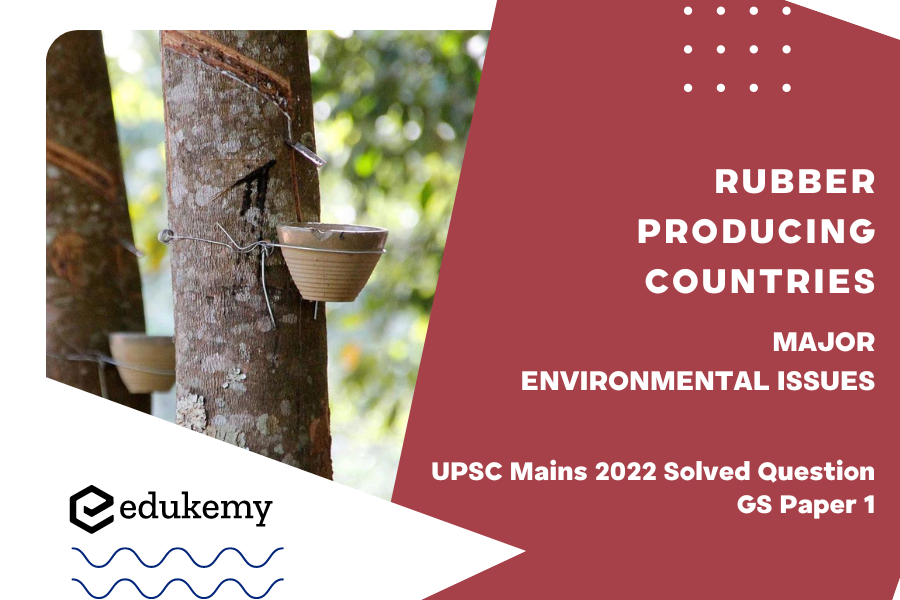The distribution of rubber-producing countries is widespread, with key players located in Southeast Asia, Africa, and South America. These nations, such as Thailand, Indonesia, Malaysia, Vietnam, Nigeria, and Brazil, dominate the global rubber market. However, the rubber industry in these countries is not without its environmental challenges. One significant issue is deforestation, as vast areas of natural forests are often cleared to make way for rubber plantations. This leads to the loss of biodiversity, disruption of ecosystems, and contributes to climate change. Additionally, the cultivation of rubber involves the use of agrochemicals, including pesticides and fertilizers, which can lead to soil and water pollution, affecting both local communities and wildlife. Furthermore, the rubber industry is associated with social and labor issues, including land disputes, poor working conditions, and low wages for plantation workers. Sustainable practices and responsible land management are crucial to mitigating these environmental and social impacts and ensuring a more environmentally friendly and socially responsible rubber industry globally.
UPSC Mains General Studies Paper – 1 Mains 2022
Factors responsible for the location of primary, secondary, and tertiary sector industries in various parts of the world including India.
UPSC Mains Civil Services IAS Exam Question Paper – 2022
Approach:
- Start with being told about rubber production.
- Describing the distribution of rubber-producing countries.
- Discuss the major environmental issues faced by rubber production.
- Conclusion /way forward
Introduction:
- The production of rubber can have significant environmental impacts, including deforestation, biodiversity loss, and climate change. According to Fao Stat (Food and Agricultural Organization Corporate Statistical Database) of 2022, Thailand is the largest producer of Rubber in the World followed by Indonesia, Vietnam, Ivory Coast, Malaysia, India, China etc.
Body:
The distribution of rubber-producing countries:
- Natural rubber contributes to deforestation, biodiversity loss, pollution, and more. But climate change and disease also threaten natural rubber-producing countries. There are 28 countries worldwide that produce natural rubber.
- The most distinct characteristic they share is a tropical climate. Tropical climates with consistent temperatures around 25-30 degrees and rainfall of 200 cm support healthy rubber trees.
- Countries with this ideal equatorial climate that produce natural rubber are found primarily in South America, Africa, and Southeast Asia. For decades, Thailand has been the world’s biggest producer of rubber, growing 35% of the world’s natural rubber supply in 2019. The top five countries that produced the most rubber in 2019 are Thailand, Indonesia, Vietnam, India, and China.
Environmental issues faced by rubber production:
- Deforestation: Natural rubber production has been identified as one of the leading causes of deforestation in mainland Southeast Asia, particularly in countries like Cambodia, Laos, and Myanmar. In these countries, large areas of forest have been cleared to make way for rubber plantations, often at the expense of important habitats for wildlife and indigenous communities.
- Biodiversity loss: The expansion of rubber plantations often involves the conversion of natural forests, particularly in the tropics, which are known for their high levels of biodiversity and ecological value. This can result in the loss of important habitats for many plant and animal species, as well as the displacement of indigenous communities who rely on the forest for their livelihoods.
- Climate change -The deforestation of equatorial vegetation, such as tropical rainforests, has significant impacts on carbon sequestration and the global climate. The loss of equatorial vegetation can have a range of other environmental and social impacts, including soil erosion, loss of biodiversity, and displacement of indigenous communities who rely on the forest for their livelihoods.
- Diseases Effect: Rubber plantations, particularly those that are managed as monocultures, can be highly vulnerable to pest attacks and diseases. When rubber trees are grown in large monoculture plantations, they are more susceptible to the spread of pests and diseases, which can rapidly damage or destroy large areas of the plantation. This can result in significant economic losses for rubber growers.
- Animal conflicts: The expansion of rubber plantations has been linked to increased conflicts between farmers and macaques, which are seen as pests that damage crops. In some cases, farmers have resorted to killing or capturing the monkeys to protect their crops, which can have negative impacts on primate populations and the broader ecosystem.
- Pollution Impact: The production of natural rubber can result in the release of various pollutants and greenhouse gases, including sulfates and nitrous oxide (N2O). Sulfates are often released during the processing of latex, which is obtained from rubber trees, particularly during the vulcanization process that is used to make rubber products. The cultivation of rubber trees on a large scale can result in the use of synthetic fertilizers, which can contribute to N2O emissions. N2O is a potent greenhouse gas that has a greater global warming potential than carbon dioxide, and its emissions can contribute to climate change and other environmental problems
Conclusion:
So promoting more responsible production of natural rubber is to prioritize the use of degraded land for rubber production instead of clearing high-quality natural forests. This can help to minimize the environmental impacts associated with rubber production and prevent further deforestation. certification schemes can help to ensure that rubber is produced responsibly and sustainably, while also providing a way for consumers and companies to identify and support sustainably produced rubber.
Frequently Asked Questions (FAQs)
1. What are the primary environmental issues faced by rubber-producing countries?
A: Rubber-producing countries often grapple with significant environmental challenges related to rubber cultivation. One major issue is deforestation, as large areas of tropical forests are cleared to make way for rubber plantations. This leads to loss of biodiversity, and disruption of ecosystems, and contributes to climate change. Additionally, the use of agrochemicals such as pesticides and fertilizers in rubber farming can result in soil and water pollution, harming local flora and fauna.
2. How does rubber cultivation impact water resources in these countries?
A: The cultivation of rubber trees requires substantial water resources. In many rubber-producing regions, excessive water use for irrigation purposes can lead to water scarcity, especially in areas already facing water stress. This not only affects local communities and ecosystems but can also contribute to conflicts over water resources. Furthermore, runoff from rubber plantations may carry agrochemical residues into nearby water bodies, posing a threat to aquatic ecosystems and the communities relying on them.
In case you still have your doubts, contact us on 9811333901.
For UPSC Prelims Resources, Click here
For Daily Updates and Study Material:
Join our Telegram Channel – Edukemy for IAS
- 1. Learn through Videos – here
- 2. Be Exam Ready by Practicing Daily MCQs – here
- 3. Daily Newsletter – Get all your Current Affairs Covered – here
- 4. Mains Answer Writing Practice – here
Visit our YouTube Channel – here



